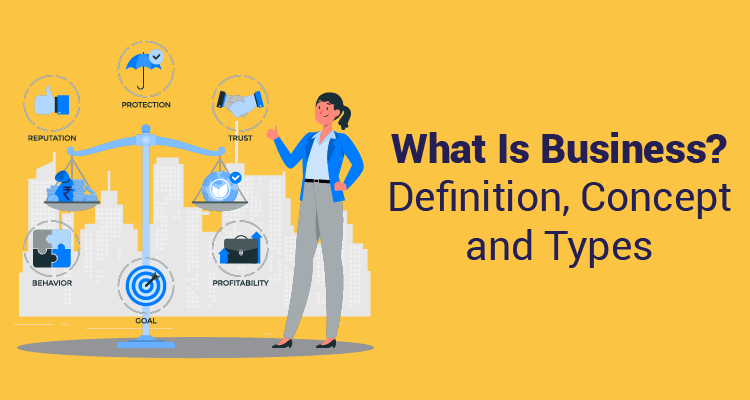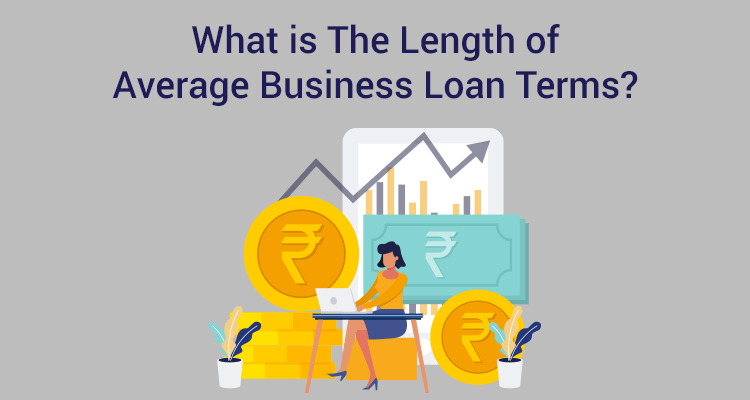The 5 Cs To Consider When Applying For A Business Loan

A business loan is broadly a line of credit given by a bank or non-banking financial company (NBFC) to a company for any purpose, such as working capital, equipment purchases, or long-term expansion, with interest and over a predetermined period of time. Small-ticket loans can also be obtained without any security. However, they are occasionally provided in exchange for collateral.
Based on the borrower’s credit history, the company’s prospects, its cash flow, and its business strategy, the lender determines whether to approve the business loan. The loan is repaid in equal monthly installments until the principal and interest are paid in full. Penalty interest will be levied by the lender for any default in business loan repayment.
While applying for a business loan, a prospective borrower must take into consideration certain important factors, or the 5 Cs. Let’s see what these factors are
1. Credit Score:
The business and business owner's credit history and credit score is one of the most important variables that lenders consider while sanctioning a business loan. The credit score helps the lender assess a business owner's likelihood to pay back a debt, almost as a behavioural attribute. The credit score is even more important in the case of an unsecured business loan, which carries a larger risk for the lenders.
While the credit score is not a foolproof indicator, it does help the lenders assess whether they should advance the money to a borrower. Lenders are hesitant to lend to businesses and business owners with poor credit histories, even if the company is profitable and generates enough surplus to cover the loan with cash flows.
Although the lender may not reject the borrower with a low credit score, it is most likely to extend a higher lending rate and scrutinize the business plan more carefully. Different lenders have varying thresholds for a low credit score. While most lenders prefer borrowers with a credit score of 750 or above, some may also approve a loan to people with a score of only 650 or 600. Most lenders, however, often won't lend to people with credit scores below 500.
2. Capacity:
The capacity of a business is its ability to repay a loan. A lender assesses the capacity by evaluating the borrower’s debt-to-income (DTI) ratio. The ratio is calculated as total debt divided by total income, and multiplied by 100. The DTI compares one’s monthly loan payments to the monthly income. It refers specifically to the portion of the gross monthly income (pre-tax) used to pay off debts like rent, a mortgage, credit cards, and other obligations. The lower the DTI ratio, the higher is one’s capacity to pay back a loan. One should aim at keeping the DTI at 30-40% or lower to improve the chances of securing a business loan. To increase the capacity, the company must either increase revenue or cut costs, or co-sign the loan with someone who has a low DTI to raise the average DTI.Sapna aapka. Business Loan Humara.
Apply Now3. Collateral:
To get a large loan, and for a longer tenure, businesses can borrow against collateral. This would entail keeping real estate, a building, piece of equipment, or stock as security with the lender to get a loan.
If a company holds some of these valuable assets, it can effectively use those as security with the lender, increasing the comfort level for borrowing money. Collateral is used by lenders as a form of security and risk management.
A lender may insist on such assets as a security to lend when the loan amount rises. However, many lenders do not need such security for company loans of a smaller amount.
Lenders usually offer up to 80% of the market value of the collateral. Therefore, the borrower will need to raise the remaining 20% of the required amount through other means.
4. Conditions:
There are a number of factors that influence the state of the business and, in turn, have an impact on a business loan. Conditions are variable and change from time to time depending on the business plans of the company and external factors, such as macroeconomic and geopolitical conditions.
As conditions are usually not in the control of the lender or the borrower, therefore, it is important for a business to have all financial documents and accounts in order at all times, as well as to maintain a good credit score.
5. Capital:
Tangible assets of a company that the borrower can use to repay debt are referred to as capital. Capital only includes liquid assets such as money in a bank account, investments, and possessions the lender can seize. Accounts receivable are not classified as capital as these are not tangible.The Importance of the 5 C's of Credit
Ever wondered why some businesses get approved for loans and others don't? It all boils down to credit risk management, the art of assessing a borrower's ability to repay a loan. And at the heart of this system lies a powerful tool: the 5 Cs of credit.In this blog not only will you get to know the credit risk meaning, you will also understand its uses and the impact it has on businesses.What are the 5 Cs of credit?
Think of them as the five pillars of creditworthiness:Character: This reflects the borrower's history of repaying debts on time. A good credit score, positive references, and responsible financial behavior all contribute to a strong character score.
Capacity: This assesses the borrower's ability to generate enough income to comfortably cover loan repayments. Stable income streams, healthy cash flow, and manageable debt levels paint a positive picture of capacity.
Capital: This considers the borrower's financial resources beyond just income. Assets like property or investments can serve as a safety net and contribute to a strong capital score.
Collateral: This refers to any assets the borrower pledges as security for the loan. While not always necessary, valuable collateral can mitigate risk and improve the loan's attractiveness.
Conditions: This takes into account external factors that might impact the borrower's ability to repay, such as the economic climate or industry trends. Understanding these conditions helps lenders make informed decisions.
Why are the 5 Cs of credit important in the B2B world?
In the complex world of business-to-business (B2B) transactions, credit risk management is crucial. Here are four key reasons why the 5 Cs matter:
Informed Decisions:
Analyzing the 5 Cs allows lenders to make informed decisions about extending credit, minimizing the risk of defaults and ensuring financial stability.Competitive Advantage:
Understanding the 5 Cs helps businesses negotiate better loan terms and interest rates, leading to cost savings and increased profitability.Stronger Relationships:
By demonstrating a strong financial profile through the 5 Cs, businesses can build trust and foster stronger relationships with lenders, potentially opening doors to future opportunities.Managing Risk:
Analyzing the 5 Cs helps businesses assess the creditworthiness of their customers, minimizing the risk of bad debts and protecting their cash flow.How Do You Use the 5 C's of Credit?
- Character: Assess the borrower's track record – are they known for timely payments and ethical business practices?
- Capacity: Analyze their ability to repay, considering income, profitability, and debt-to-equity ratio.
- Capital: Evaluate their financial strength, including net worth and available assets.
- Collateral: Determine if they have assets to secure the loan, providing an additional layer of protection.
- Conditions: Consider external factors impacting their ability to repay, like industry trends and economic conditions.
Challenges with Traditional Methods:
While the 5 Cs remain fundamental, the traditional approach has limitations:
Subjectivity: Assessing character and conditions can be subjective, leading to potential bias and inconsistency in decision-making.
Limited data: Traditional methods rely heavily on historical data, which may not always accurately predict future behavior.
Slow and manual: Manual analysis of financial documents and reports can be time-consuming and prone to errors.
How Automation is Revolutionizing Credit Risk Management:
Fortunately, automation is transforming the world of credit risk management. Advanced algorithms and machine learning are now used to analyze vast amounts of data beyond traditional financial statements, including social media sentiment, online reviews, and alternative data sources. This allows for:
Faster and More Efficient Analysis: Automation streamlines the process, reducing the time and effort required to assess creditworthiness.
Data-Driven Decisions: By analyzing a wider range of data, lenders can make more informed and objective decisions, minimizing bias and improving accuracy.
Real-Time Monitoring: Automation enables continuous monitoring of a borrower's financial health, allowing for proactive risk management and timely interventions.
Conclusion
In India, there are a number of commercial, public, and non-banking financial institutions that provide business loans. These loans might be of different kinds and can be used for different purposes. As a result, one must select the best financing arrangement based on the needs of the business.
As each financial institution has its own terms, it is always advisable to check, compare, and select the best lender. Ideally, one should pick a reputable lender such as IIFL Finance to avoid any headaches in the future.
While state-run banks appear to be the most reliable option, reputable NBFCs such as IIFL Finance provide loans with a far simpler application process, attractive interest rates, and flexible payback terms. IIFL Finance also offers an online loan application system that enables one to apply for a business loan from the convenience of one’s home or place of work.
The 5 C's are a starting point, not a rigid rulebook. Adapt your approach based on the specific industry, client size, and loan amount. Stay informed about evolving regulations and market trends to refine your credit risk management strategies. Build a robust credit risk management system that balances automation with human expertise for optimal results.
Sapna aapka. Business Loan Humara.
Apply NowDisclaimer : The information in this blog is for general purposes only and may change without notice. It does not constitute legal, tax, or financial advice. Readers should seek professional guidance and make decisions at their own discretion. IIFL Finance is not liable for any reliance on this content. Read more



